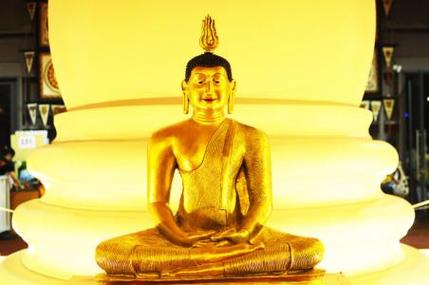Buddhism Om: A Multidimensional Exploration
The “Om” in Buddhism is a sacred sound that holds immense significance in the practice of this ancient religion. Often pronounced as “Aum” or “Omm,” this sound is considered to be the primordial sound from which all other sounds arise. In this article, we will delve into the various dimensions of the Buddhist “Om,” exploring its origins, meanings, and its role in meditation and spiritual practices.
Origins of the Buddhist “Om”
The origin of the “Om” can be traced back to the Vedic texts of ancient India, where it is considered to be the most sacred of all mantras. In Buddhism, the “Om” is believed to be the sound of the universe, representing the unity of all things. It is often associated with the Buddha himself, symbolizing his enlightenment and the ultimate truth.

Meanings of the Buddhist “Om”
The “Om” has several meanings in Buddhism, each contributing to its profound significance. Here are some of the key meanings:
| Meaning | Description |
|---|---|
| Creation | The “Om” is believed to be the sound of the universe’s creation, representing the beginning of all things. |
| Existence | It signifies the ongoing existence of the universe, highlighting the continuous flow of life and energy. |
| Transformation | The “Om” represents the process of transformation and the continuous evolution of the universe. |
| Enlightenment | It is considered to be the sound of enlightenment, symbolizing the ultimate truth and wisdom. |
The Role of the Buddhist “Om” in Meditation
Meditation is a central practice in Buddhism, and the “Om” plays a crucial role in this process. When used during meditation, the “Om” helps to focus the mind, calm the thoughts, and create a sense of inner peace. Here’s how the “Om” is incorporated into meditation:
-
Begin by finding a quiet and comfortable place to sit.
-
Take a few deep breaths, focusing on your breath to center yourself.

-
Start to silently repeat the “Om” in your mind, allowing the sound to resonate within you.
-
As you continue to meditate, observe your thoughts and emotions without judgment, allowing them to pass without attachment.
-
Conclude your meditation by silently repeating the “Om” a few more times, expressing gratitude for the experience.
The Buddhist “Om” in Spiritual Practices
Beyond meditation, the “Om” is also used in various spiritual practices within Buddhism. Here are a few examples:
-
Mantras: The “Om” is often used as the first sound in Buddhist mantras, serving as a powerful tool for invoking the divine and focusing the mind.
-
Chanting: Chanting the “Om” is a common practice in Buddhist temples and monasteries, helping to create a sense of community and harmony.
-
Prayer Flags: The “Om” is often inscribed on prayer flags, which are hung in the mountains and along rivers to spread blessings and positive energy.
Cultural Significance of the Buddhist “Om”
The “Om” has also become a symbol of cultural significance in many Buddhist countries. It is often seen in art, architecture, and everyday life, representing the values and beliefs of the people. Here are a few examples:
-
Art: The “Om” is depicted in various forms of art, including paintings, sculptures, and thangkas (Tibetan Buddhist paintings).
-
Architecture: Many Buddhist temples and monasteries feature the “Om” in their design, either as a carved symbol or as part of




